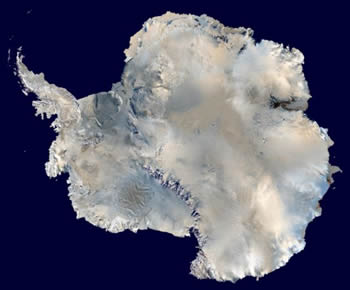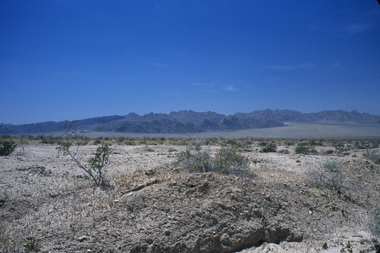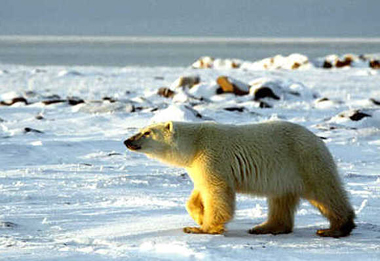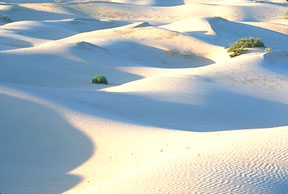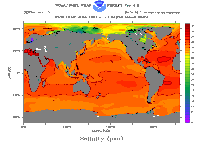Click on image for full size
Image courtesy of the U.S. Natl. Park Service, photograph by Al Mebane.
Extreme Environments - Acid, Radiation, and More!
This page describes extreme environments that are acidic or alkaline, are exposed to high levels of radiation, are under tremendous pressure, or are hostile to "normal" life in a number of other unusual ways. Extreme environments are places that are inhospitable to most "normal" living creatures. Extreme environments are not necessarily lifeless. Certain types of organisms, known collectively as "extremophiles", have adapted to survive or even thrive in various types of extreme environments.
Familiar extreme environments include deserts, mountain peaks, caves, and the frozen realms of the Arctic and Antarctic. Some extreme environments are very hot or very cold, extremely dry, or both.
Several types of chemicals present in certain environments push life to the brink and beyond. Places like Utah's (USA) Great Salt Lake and the aptly-named Dead Sea in the Middle East are typical hyper-saline (extremely salty) environments in which only specially adapted creatures can live. Other organisms manage to get by in extremely acidic or alkaline environments. Some hot springs and places where polluting chemicals seep from mines are typical acidic environments, with a pH of 3 or less, in which specialized microbes survive.
Some environments have high levels of radiation. High-altitude mountaintops, which jut above much of Earth's protective atmosphere, suffer increased levels of ultraviolet (UV) radiation exposure. Caves and other underground voids, as well as human-created waste dumps, can contain radioactive materials that bombard nearby creatures. Some microbes live in microscopic pores inside of rocks or within fissures deep beneath Earth's surface.
Certain environments, usually far underground or deep beneath the ocean, have high pressures that are hard for most creatures to handle. Many niches are extremely poor in nutrients, depriving their inhabitants of food sources. Others lack oxygen, making them off-limits to "air breathers" like ourselves. Places such as caves and the deep ocean are perpetually dark, so photosynthetic organisms that form the basis of many food webs cannot grow there for lack of sunlight.







